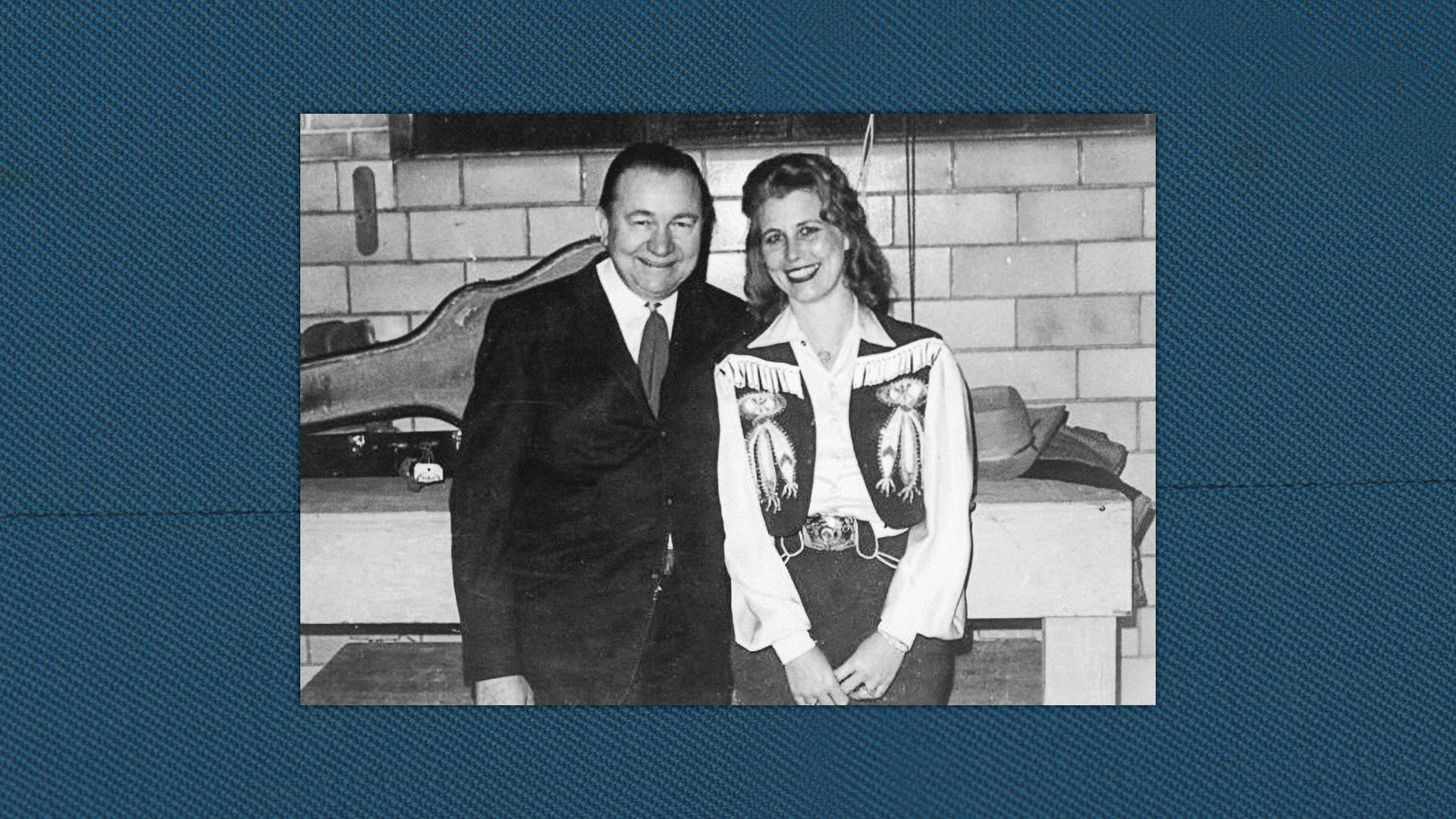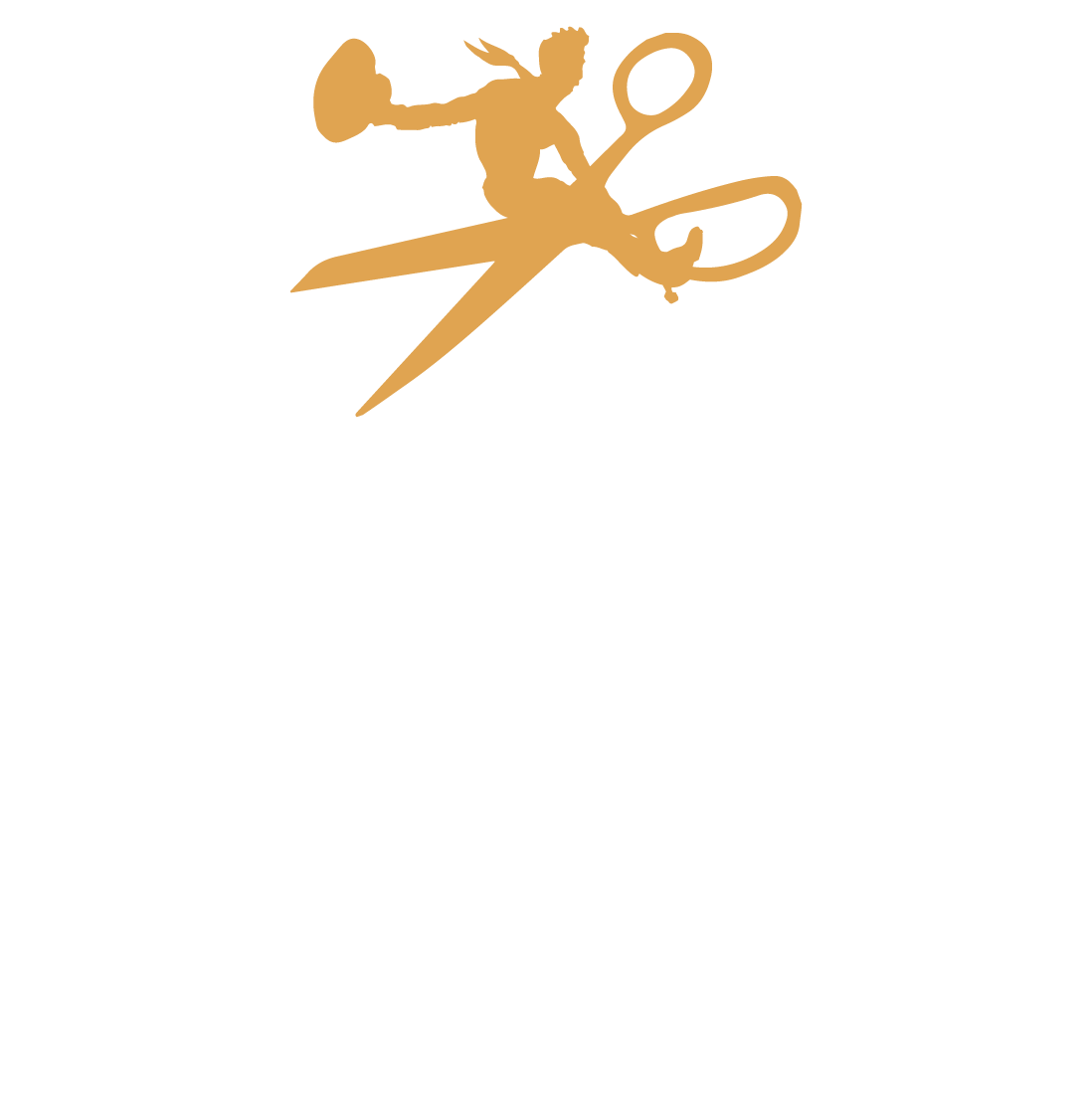

Tex Ritter and Kay Arnold, c. 1960
Part Seven
Western Style Roundup
In post-World War II America, the popularity of all things Western created a demand for fancy cowboy garments that could only be partially appeased by rodeo tailors around the country, including former ranch hands Fay Ward in New York and Marge Riley in California.
Influenced by the colorful costumes worn by entertainers and rodeo stars, commercial Western-wear manufacturers such as Rockmount Ranch Wear launched their own lines of embellished shirts. Some country artists took matters into their own hands, going on stage in homemade costumes modeled on Nudie, Turk, and Rodeo Ben’s dazzling creations.


Fay Ward. Courtesy of Mrs. Fay Ward, Holly George-Warren and Michelle Freedman, How the West Was Worn
Fay Ward:
The Cowboy Tailor at Work
Fay Ward lived the cowboy life long before becoming a Western-wear designer. He was born in Adelaide, Iowa in 1888, to parents who performed in Wild West shows. Placed in a foster home in South Dakota when he was eight, Ward ran away to work on a ranch. He lived for a time on a Sioux Indian reservation, and spent more than a decade as a rodeo contestant.
During the Depression, Ward went to New York in search of a publisher for The Cowboy at Work, a book he wrote and illustrated. Inspired by a visit to the annual rodeo at Madison Square Garden, he decided to launch his own Western-wear business and set up a modest shop in Manhattan. Through his mail-order catalogs and advertisements in rodeo programs and Western magazines, Ward catered to rodeo entertainers, cowboy film stars, and regional musicians. Tiring of city life, the former ranch hand sold his business and moved to Arizona in the 1950s.

Kay Arnold
Arkansas-born recording artist and songwriter Kay Arnold was best known for penning Billy Walker’s 1964 country hit “Cross the Brazos at Waco.” Her stage wardrobe included colorful costumes designed by Fay Ward, such as this vest and skirt, embellished with contrasting fringe, rhinestones, and embroidery influenced by depictions of Native American culture.




Kay Arnold wore this Fay Ward outfit, festooned with rhinestones and contrasting fringe, piping, and embroidered flowers.




Wilf Carter also known as Montana Slim
Wilf Carter
Canada’s first country music star, Wilf Carter—known to American audiences as Montana Slim—was born in Nova Scotia in 1904. His fifty-year recording career began in the 1930s, with a string of releases showcasing his Jimmie Rodgers-influenced yodeling. Carter owned an extensive wardrobe of fancy cowboy clothing.
Fay Ward made this ensemble—decorated with contrasting cord piping and smile pockets with arrowhead stitching—for Wilf Carter.




Jerry & Sky at Boston radio station WHDH, 1944. Photo by Richard Merrill. ©Richard Merrill
Jerry & Sky
Active in the Northeast in the 1940s and 1950s, duo Jerry & Sky relied on New York-based rodeo tailor Fay Ward for much of their stage wear.
Schuyler “Sky” Snow of Jerry & Sky wore this Fay Ward shirt, decorated with contrasting piping, smile pockets with stitched arrowheads, six-snap shotgun cuffs, and embroidered flowers.




Fay Ward designed this pinstripe ensemble for Schuyler “Sky” Snow of Jerry & Sky.





Fay Ward drew the illustrations in his mail-order advertisements.

Marge Riley: Ranch Style
Wyoming native Marge Riley began making her own fancy Western wear in the early 1930s, and was soon fashioning ensembles for neighboring ranch girls. In 1936, she opened a shop in Los Angeles, where she designed colorful cowboy garments for Gene Autry, Dale Evans, and other entertainers. Capitalizing on America’s love affair with dude-ranch fashions in the early 1940s, Riley opened a branch store in Palm Springs. A contemporary newspaper account touted her as “a working cowgirl named Marge Riley, who started busting broncos at a tender age on her father’s cattle ranch in Wyoming. She’s a rootin’ tootin’ cowgirl from the wild and woolly west who learned from experience just how a proper dude rancher ought to dress.”

Steel guitarist Bonnie Dodd at San Diego nightclub El Rancho, c. 1946
Bonnie Dodd
An accomplished musician and prolific songwriter, Bonnie Dodd toured as Tex Ritter’s steel guitarist in the 1940s, and wrote “Be Careful of Stones That You Throw,” recorded by Hank Williams in 1952.
This drawing of Bonnie Dodd on stage at a San Diego nightclub was made by a US Navy sailor.
This drawing of Bonnie Dodd on stage at a San Diego nightclub was made by a US Navy sailor.

Marge Riley created this outfit, with contrasting fringe and leather appliqués, for Bonnie Dodd.



Homespun
By the 1950s, fancy Western-style costumes had become the status quo in country music stage wear. For some performers, custom outfits from Nudie, Turk, and other rodeo tailors were out of reach, financially. Not to be denied, singers Patsy Cline and Maxine Brown were among those who took a do-it-yourself approach. Early in their careers, Cline and Brown appeared in colorful cowgirl costumes made by their mothers.
Patsy Cline, “I’ve Loved and Lost Again,” 1957
Patsy Cline
Prior to her successful career with Decca Records, Patsy Cline wore this cowgirl costume, designed and sewed by her mother, Hilda Hensley. Inspired by Nudie’s designs, the shirt and skirt are embellished with contrasting leather fringe; piping; and felt-appliquéd broncos and riders, outlined in rhinestones.


Patsy Cline, 1955. Photo by Walden S. Fabry


Maxine and Jim Ed Brown, early 1950s
Maxine Brown
Birdie Lee Tuberville Brown—mother of Bonnie, Maxine, and Jim Ed Brown of Country Music Hall of Fame members the Browns—designed and made this cowgirl outfit for Maxine. She wore the shirt and skirt, with contrasting yoke, cuffs, fringe, and appliquéd stars, in the early 1950s, when she and Jim Ed worked as a duo on Little Rock radio station KLRA’s Dutch O’Neal’s Barnyard Frolic.



Off the Rack
Country music entertainers looking to spruce up their cowboy image had options. The wider availability and lower cost of colorful, embroidered Western shirts produced by H Bar C Ranchwear and other manufacturers, beginning in the 1930s, made rodeo tailor-inspired designs more accessible.










